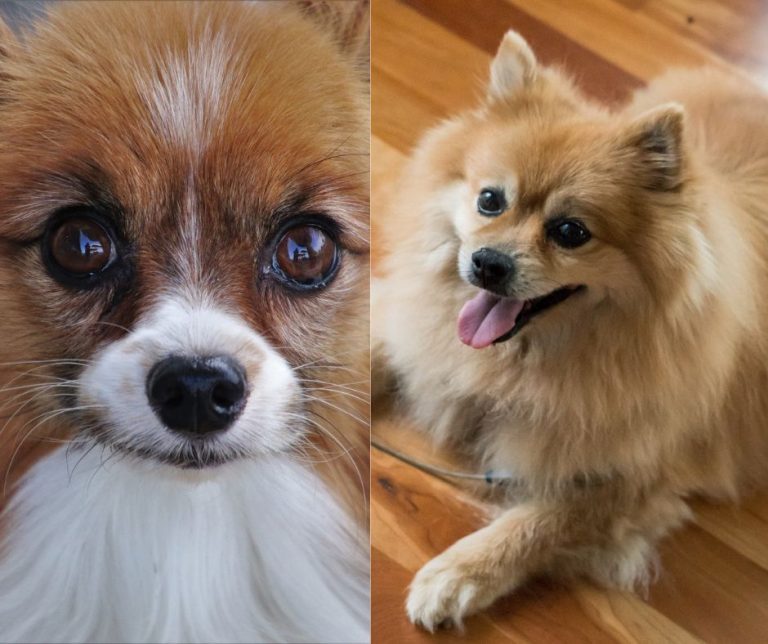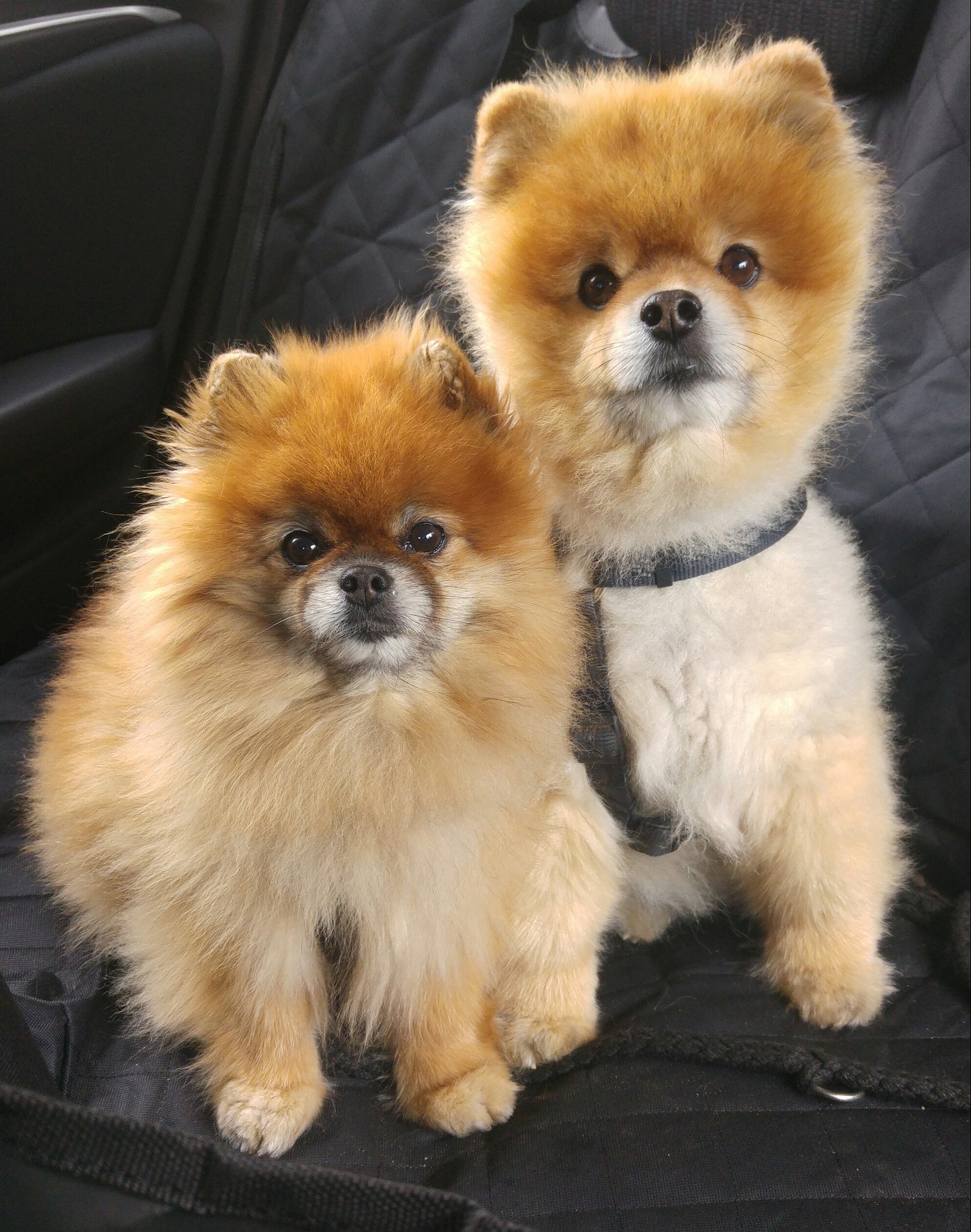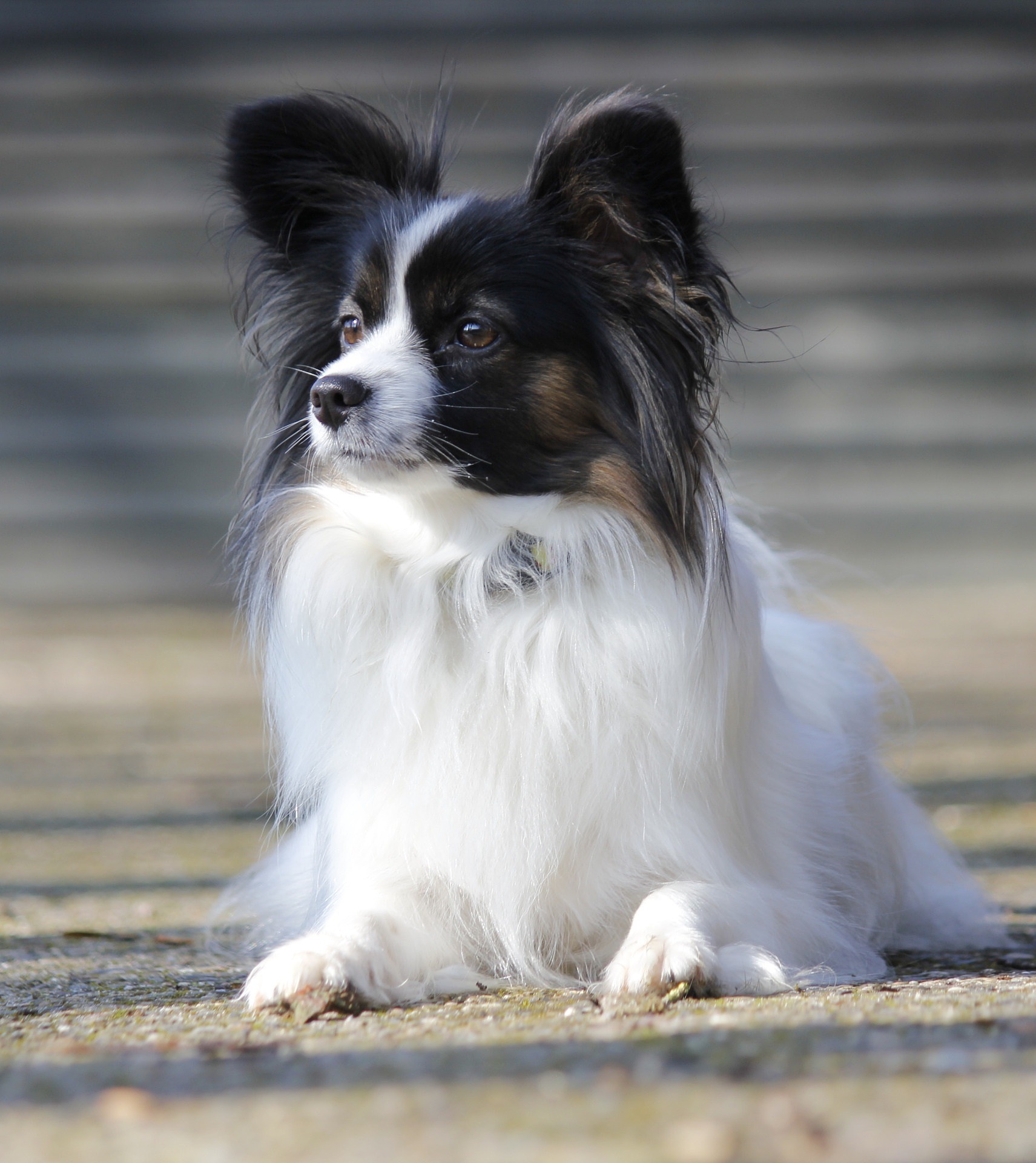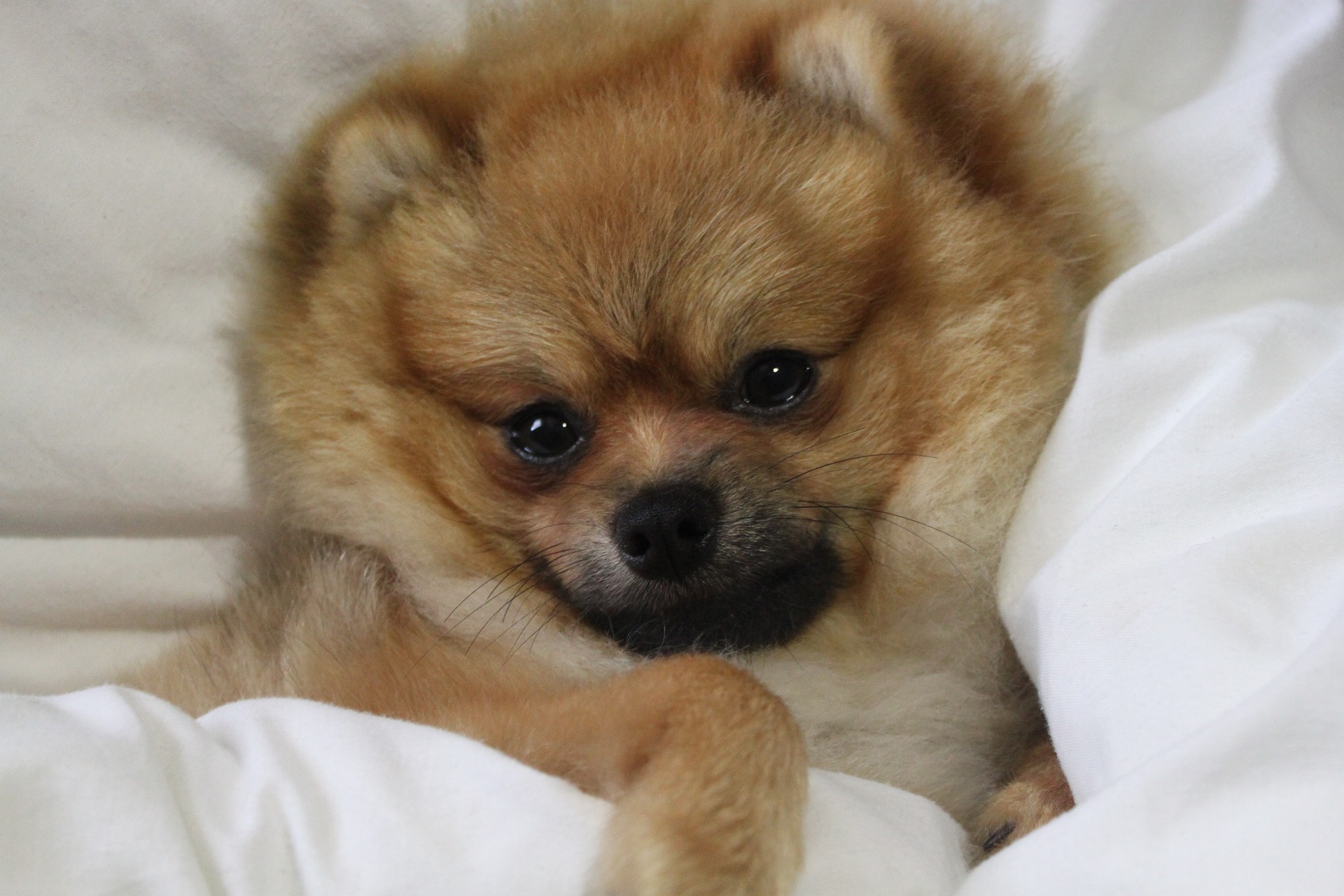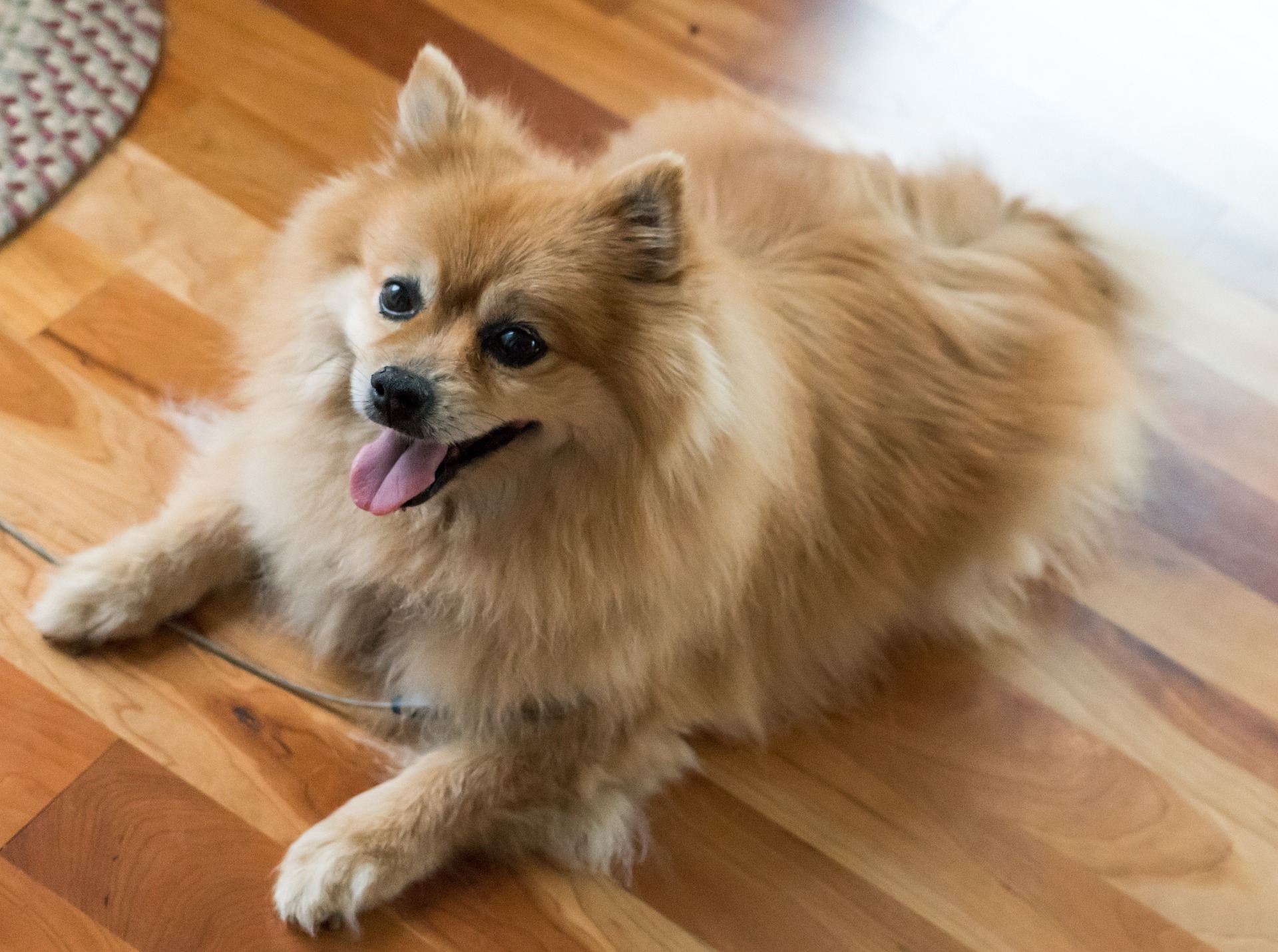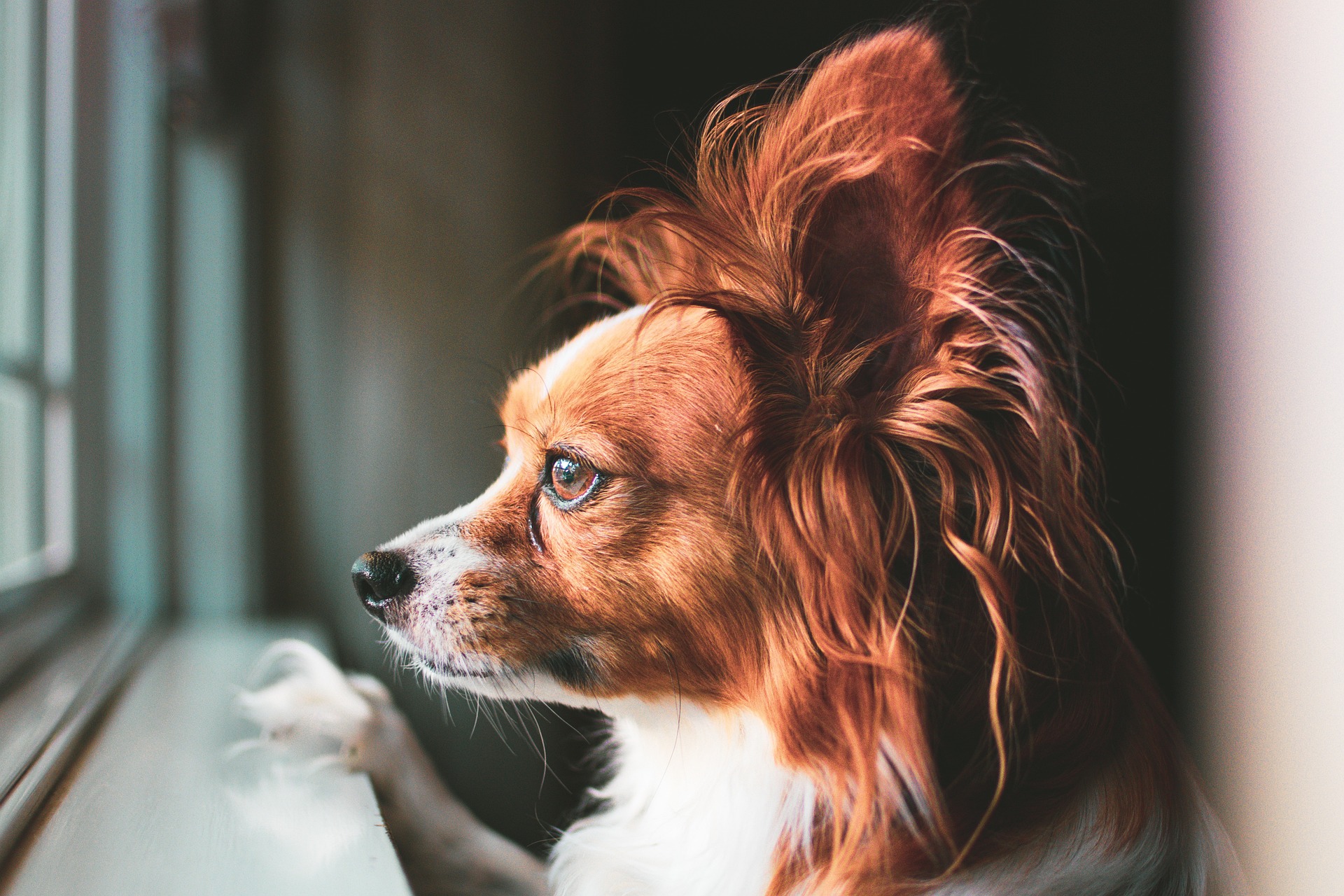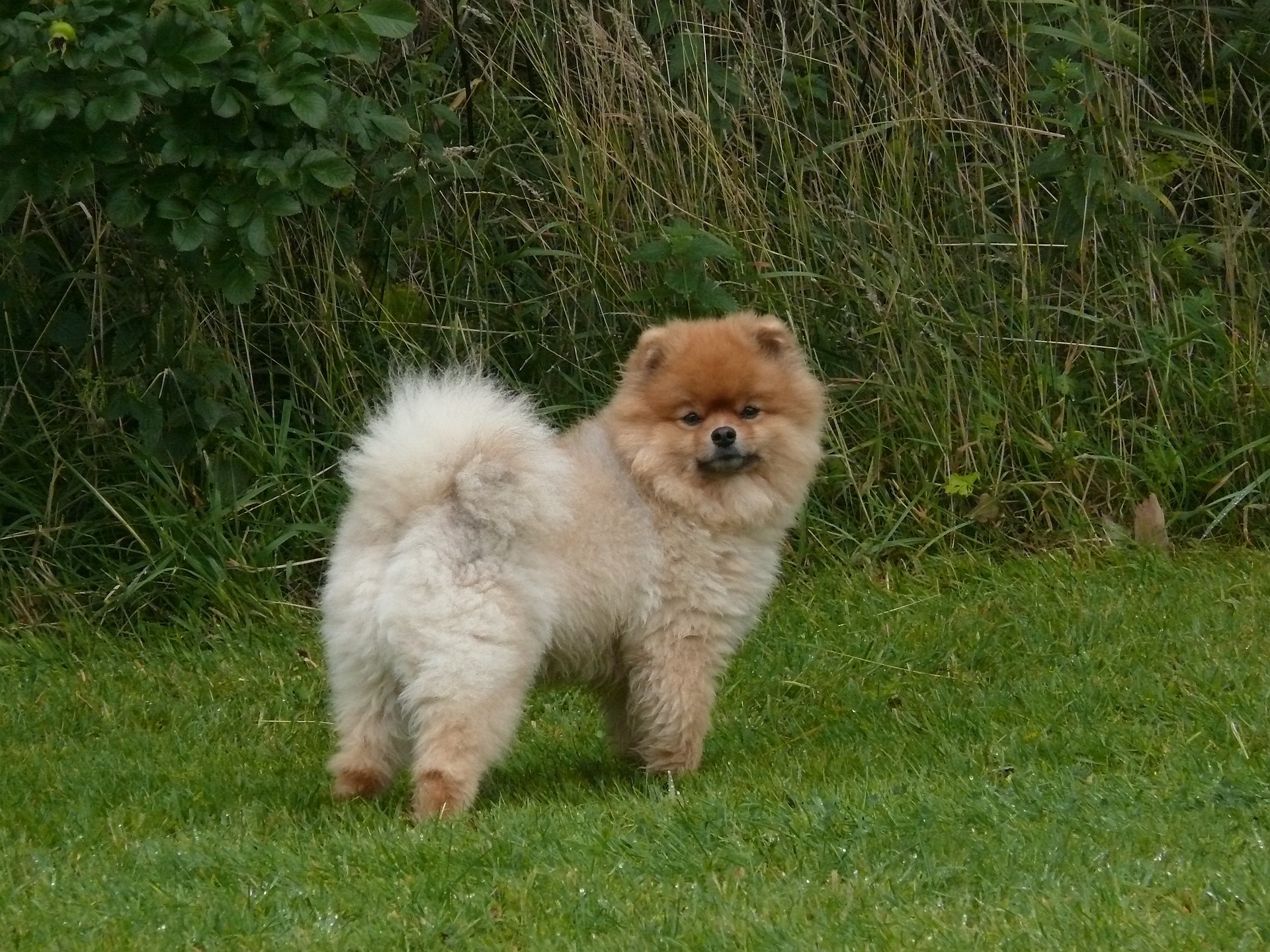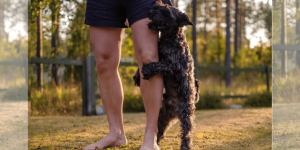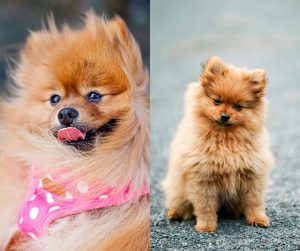When exploring the world of small dog breeds, the Papillon and Pomeranian often come up as attractive options for dog lovers seeking a petite companion.
Both breeds share a charisma that belies their diminutive stature. They offer distinctly appealing personalities along with their compact size. They are celebrated for their intelligence and affection, making either breed a potential match for those seeking a lively and loving pet.
The Papillon, with its distinct butterfly-like ears, is a breed known for its grace and agility. They carry a history rich with companionship to nobility, which is reflected in their dignified demeanor.
On the other hand, the Pomeranian, with a lineage tracing back to large sled dogs, presents a fluffier appearance thanks to its thick double coat. They exude confidence and charm, qualities that have endeared them to many throughout the centuries.
Let’s take a deeper look at the Papillon vs Pomeranian puppy comparison. Fun fact: there is also a mixed breed dog with genetics of these two. Commonly known as the Paperanian puppy, it is a mix between the Papillon dog breed and Pomeranian.
Key Takeaways
- Both the Papillon and Pomeranian are affectionate, smart, and make ideal pets for those seeking a small companion
- Distinguished by their unique physical traits, the Papillon’s butterfly ears and the Pomeranian’s lush coat highlight their individual histories
- Prospective owners should consider grooming needs, lifespan, and breed-specific challenges when choosing between these two breeds
Breed Origins and History
When looking at the Papillon and Pomeranian, it’s fascinating to see how their unique histories have shaped them into the charming companions we adore today.
Though both breeds share European roots and a penchant for pampering, their stories unfold across different cultures and eras.
Papillon Origin
The Papillon, also known as the Continental Toy Spaniel, boasts a storied history that begins in France. Derived from the French word for “butterfly”—a nod to its distinctive, butterfly-like ears—this breed is depicted in art dating back centuries. They were the darlings of French nobility and have graced the laps of many in European high society.
While some consider his origin to be French, he is actually a Belgian dog breed.
Pomeranian Origin
On the other hand, the Pomeranian’s lineage traces back to Germany and Poland, where its ancestors were much larger sled-pulling dogs. Over the years, they were bred down to their current toy size. The breed’s name is derived from the historical region of Pomerania, now split between Germany and Poland. These fluffy dogs gained popularity when Queen Victoria allowed some to be shown in a conformation show, setting a trend for the smaller size.
This companion dog is closely related to the German Spitz. They share the same ancestry.
Physical Characteristics
When comparing the Papillon vs Pomeranian dog breeds, the physical characteristics that instantly grab your attention are their size, distinct coat textures, and ear shapes.
Both breeds pack tons of personality into small packages, but they have unique traits that set them apart.
Appearance
Papillons are immediately recognizable by their large, butterfly-like ears, adorned with fringes of flowing hair. These dogs carry themselves with elegance and poise.
Pomeranians, however, have a different allure with their small, erect ears and a fox-like expression that gives them a plucky appearance.
Size Comparison
Papillon:
- Height: 8-11 inches
- Weight: 5-10 pounds
Pomeranian:
- Height: 6-7 inches (typically, though some can be as tall as Papillons)
- Weight: 3-7 pounds
In summary, the breeds share a similar height range, but Pomeranians tend to be lighter than Papillons. Both are petite and can fit comfortably in your lap, which makes them ideal companions for cozy homes.
Coat and Color
When we move on to their coats, the difference is clear as day.
Pomeranians boast a thick, fluffy double coat that stands out and demands to be petted. The Papillon has a single-layer coat that is long, straight, and silky to the touch.
Both breeds can come in a variety of colors such as red, black, and sable, giving potential pet owners a delightful spectrum to choose from.
The Pomeranian’s double coat requires regular grooming to keep it in tip-top shape, while the Papillon’s coat, devoid of an undercoat, is surprisingly easy to maintain.
Temperament and Personality
Let’s compare dog breeds in terms of temperament. When comparing the Papillon vs Pomeranian dog breed, it’s clear that both have personalities bursting with charm. These pint-sized companions share an eagerness for interaction that endears them to many.
Behavioral Traits
Papillons are often considered outgoing and happy, packed with intelligence that makes training a breeze.
Their alert nature serves them well as watchdogs, as they are keen to let their families know when something seems amiss.
These dogs may be small, but they exude confidence and are unexpectedly energetic, always ready for a playful romp or a stimulating game.
On the flip side, Pomeranians are just as loving and affectionate, with a dollop of stubbornness that adds to their quirky appeal.
Their friendly disposition is matched by their undeniable social nature, reveling in the attention they receive from everyone around them.
The Pomeranian’s alertness also makes them excellent watchdogs, though they may need guidance to discern between everyday occurrences and genuine threats.
Family Compatibility
When it comes to families, the Papillon is known for being kid-friendly and adjusts well to households with gentle children.
They are generally pet-friendly, capable of mingling with other animals when properly introduced.
The breed’s affectionate and playful demeanor makes them a joy for families seeking a lovable and energetic companion.
Pomeranians, with their happy-go-lucky attitude, fit into family life like a glove.
Their size makes them more suitable for families with older children who understand how to handle small dogs with care.
While the Pomeranian can be strong-willed, they are eager to please and can shine in a social, loving household that appreciates their intelligent and playful nature.
Both breeds value close contact with their humans and thrive in environments where they can engage with their family members, whether they’re curling up on a lap or joining in the household activities.
Their stranger-friendly attitude can vary from one dog to another, so socialization from a young age is key to helping them become well-rounded adults.
Health and Lifespan
When choosing between a Papillon and a Pomeranian, understanding the health and longevity of each breed is crucial. They both bring joy and companionship, but they do have their breed-specific concerns and life expectancy that future dog owners should consider.
Common Health Concerns
Both Papillons and Pomeranians are relatively healthy breeds, but they do have a predisposition to certain health issues.
Patellar luxation, a condition where the kneecap dislocates, is common in both breeds.
Hip dysplasia, although it’s more commonly associated with larger breeds, can affect these small dogs, potentially leading to arthritis or mobility problems.
Another concern is collapsed trachea, particularly in Pomeranians, which leads to difficulty breathing and requires careful management.
Cataracts and progressive retinal atrophy are also seen in both breeds, which can progress to impair vision.
- Papillons: Known for their butterfly-like ears, they may experience health issues such as luxating patella and cataracts
- Pomeranians: With their plush coats, they are prone to collapsed tracheas and hip dysplasia
Life Expectancy
A dog’s lifespan is an important consideration, and both of these sprightly breeds have the potential to be long-lived companions. Because of their longevity, the Pomeranians are a popular choice for cross-breeding.
- Papillons: They tend to live between 12 to 16 years. With proper care, they can be spry and active well into their senior years
- Pomeranians: These little fluff balls generally enjoy a longevity of 12 to 16 years as well, similar to their Papillon counterparts
Grooming and Care
When welcoming a Papillon or Pomeranian into your home, understanding the grooming and care essentials is crucial for their well-being.
Let’s talk about the specific grooming needs and exercise requirements that’ll keep your tiny companion looking spiffy and staying lively.
Grooming Needs
Papillon: With their beautiful, butterfly-like ears and long, flowing coat, Papillons are a sight to behold.
They require regular brushing, about two to three times a week, to prevent tangles and mats, particularly in their feathered hair. Their moderate shedding means you’ll find some hair around, but it’s manageable with consistent grooming.
- Brushing frequency: 2-3 times a week
- Shedding level: Moderate
Pomeranian: These little fluff balls possess a thick double coat that craves attention.
Daily brushing helps to reduce the amount of shedding and keeps their fur looking full and vibrant.
Remember, Pomeranians do shed quite a bit, so regular grooming is a must to keep your home from turning into a fur festival.
- Brushing frequency: Daily
- Shedding level: High
Exercise Requirements
Papillon: Don’t let their dainty appearance fool you; Papillons have a vibrant energy level that requires regular daily exercise to stay happy.
A good 30 to 45 minutes of playtime, walks, or interactive games will do the trick. Keeping those little legs moving is the secret to a content and healthy Papillon.
- Daily exercise: 30-45 minutes
- Energy level: Vibrant
Pomeranian: These pint-sized pups may look like they belong on a cushion, but they need their exercise too, about 20 to 30 minutes daily.
Their energy levels are high for such small bodies, and enough play and exercise are vital to prevent boredom and extra weight gain.
- Daily exercise: 20-30 minutes
- Energy level: High
Training and Socialization
When considering a Papillon or Pomeranian, one should know that both breeds have their own quirks when it comes to training and socialization.
They possess a blend of intelligence and playfulness, which greatly influences their trainability and interactions with others.
Trainability
Papillons are known for their sharp minds and eagerness to please. This combination generally makes them quite easy to train.
However, like many intelligent breeds, they can sometimes be willful, which means consistent, positive reinforcement is key.
It’s notable that they tend to excel in obedience and agility activities, showcasing their smarts and dexterity.
Starting training early is critical in tapping into their potential and curbing any unwanted behaviors.
Pomeranians, while just as clever, may require a bit more patience during training due to their independent nature.
They respond well to methods that make learning fun, using lots of praise and treats as motivation.
Keeping sessions short and engaging can help harness their concentration. They’re proof that even the smallest dogs have a great capacity to learn.
Interactions with Others
When we talk about socialization, both breeds show a friendly attitude, but with different energy levels and considerations.
Papillons typically display high levels of sociability. They’re quite playful and often do well with other pets, especially if introduced early on.
One should watch for their slight prey drive, which can be managed with appropriate training.
Pomeranians are sociable too, but they can sometimes exhibit territorial behaviors and be reserved around strangers, which calls for gentle socialization starting from a young age.
This will help minimize any timid or aggressive tendencies. Their need for social interaction is often as high as their energy, and they relish being the center of attention among both humans and fellow canines.
Breed Specific Challenges
When considering a Papillon or Pomeranian, potential owners should be aware of some breed-specific challenges that come with these adorable yet spirited companions.
Each breed has its own set of behavioral and adaptability issues, which are important to acknowledge to maintain a harmonious living environment.
Behavioral Issues
Papillons and Pomeranians might be small, but they pack a punch with their personalities.
Papillons, known for their butterfly-like ears, are energetic and highly intelligent. They require ample mental stimulation to prevent boredom, which can lead to destructive behavior.
Regular training and interactive playtime are essential for keeping their minds sharp and curbing any unwanted mischief.
Pomeranians, with their fluffy coats and plucky attitudes, have a propensity for barking.
It is not uncommon for these little dogs to assume the role of a watchdog, alerting their owners to any perceived threats with a spirited yapping.
While this can be endearing and potentially useful, it might also satisfy owners looking for a quiet companion or those living in apartments where noise can be an issue with neighbors.
Adaptability
While both breeds are quite adaptable to living indoors and can thrive in an apartment setting, they have different needs in terms of exercise and companionship.
Papillons have a high energy level and enjoy staying active; they benefit greatly from daily walks and time to play.
Pomeranians also need exercise, but due to their smaller size and slightly less intense energy levels, they can often have their needs met with indoor activities and shorter outdoor excursions.
Health is also a factor in adaptability. Both breeds can suffer from common health issues like dental problems and patellar luxation.
Being aware and proactive about these potential issues is vital, as is choosing a vet that understands the unique needs of these toy dog breeds.
Papillons are known for their independence but can have separation anxiety if left alone for too long.
They do best in environments where they aren’t neglected and can join in on family activities.
Pomeranians, while also independent, tend to form a strong bond with a single person and might prefer a quieter household where they can be the star of the show.
Choosing the Right Dog for You
When it comes to adding a new furry member to your family, picking between the Papillon and Pomeranian can be as important as choosing a new friend.
Both toy dog breeds bring their unique blend of charm and energy to a home, but it’s the subtle differences that can tip the scales for a perfect match.
Comparing Papillon and Pomeranian
Papillon
Size: 8-11 inches
Weight: 5-10 pounds
Lifespan: 13-16 years
Exercise Needs: Moderate (30-45 minutes a day)
Popularity Rank (AKC): 53
Price: Varies; often higher due to less commonality
Temperament: Friendly, energetic, easy to train
Pomeranian
Size: 6-7 inches
Weight: 3-7 pounds
Lifespan: 12-16 years
Exercise Needs: Moderate (45 minutes daily)
Popularity Rank (AKC): 23
Price: Typically high for well-bred individuals
Temperament: Loyal, affectionate, somewhat more challenging to train
Both dogs fall under the toy breed category and have gained widespread popularity due to their affectionate nature and adaptability to various living situations. They are known to form strong bonds with their owners, making them loyal companions.
When it comes to the American Kennel Club’s (AKC) popularity ranking, Pomeranians are more common, sitting at rank 23, whereas Papillons are a bit less common, positioned at rank 53, which might influence their availability and price.
In terms of selection, Papillons are seen as a better fit for families with children, due to their gentle demeanor. Meanwhile, Pomeranians, despite their affectionate disposition, might be better suited for older owners due to their smaller size and more delicate structure.
Exercise needs for both breeds are moderate, but Papillons may require a bit more space and stimulation due to their energetic personality.
One will often find that Pomeranians might be a bit pricier, not only because of their deep-seated popularity but also due to their distinctive fluffy coat that requires regular grooming.
On the flip side, Papillons stand out with their characteristic butterfly-like ears, and while grooming is less intensive than Pomeranians, they still need consistent care.

